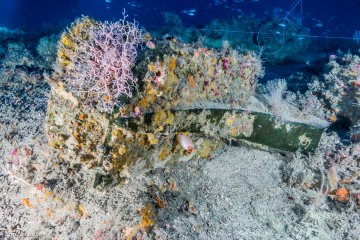710424_Ram Tough_360 px width.png

A bronze ram recovered from a Roman warship that sank in 241 BC near Siciliy is inhabited by more than 100 species of marine life. Credit: K. Egorov, Società per la Documentazione dei Siti Sommersi – Global Underwater Explorers (SDSS-GUE)
The final battle of a war between Rome and Carthage sent many warships to their doom. Scientists have pulled up artifacts from some of those vessels. And at least one of the artifacts became a busy home for life. Biologists found evidence of more than a hundred species—clams, worms, snails, and others—a record of how life colonized the artifact over the centuries.
The battle took place in 241 BC. It was in the Mediterranean Sea, off the coast of Sicily, a large island near the toe of Italy’s “boot.” Rome was blockading the island. Carthage sent a fleet to break through, but Rome won the battle—and the war.
In 2017, scientists recovered several artifacts from that site. One was a ram—a hollow bronze object attached to the front of a ship. It was used to ram through the sides of enemy boats. The ram is three feet long, and weighs 375 pounds.
The ram was restored in 2019. Workers preserved all the evidence of life. Biologists then sifted through that material. They cataloged 114 species. Some inhabited the ram, while others were pieces of shell or other hard bits that had been carried into the ram by the currents.
The organisms came from several nearby habitats, including seagrass beds and both muddy and rocky sea floors. Some of the species were mobile, while others were stationary—probably washed up by the currents. They reflect the life across a wide area of the Mediterranean—and across more than two millennia.

